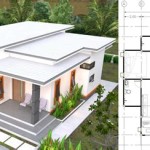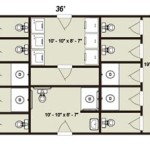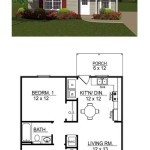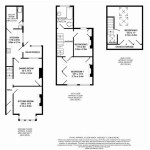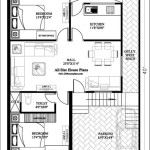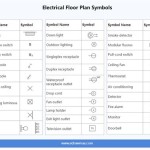Tiny Passive Solar House Plans: A Path to Energy Efficiency
In a world increasingly concerned with sustainability and environmental conservation, tiny passive solar house plans provide a compelling solution for eco-conscious homeowners seeking energy-efficient living. These compact dwellings harness the power of natural elements to minimize energy consumption, resulting in significant savings on utility bills while reducing carbon emissions.
Passive solar designs utilize the sun's energy to heat and illuminate interior spaces. By carefully positioning windows, walls, and roof surfaces, architects optimize passive solar gain, allowing sunlight to penetrate and warm the house during colder months.
Here are several essential aspects to consider when planning a tiny passive solar house:
Orientation and Site Selection:
Proper orientation is crucial. Southern-facing walls receive maximum sunlight, so locate your house accordingly. Assess your site for trees or other structures that may obstruct solar access.
Window Placement and Size:
Large, south-facing windows allow ample sunlight to enter. Consider double or triple-glazed windows to improve insulation and reduce heat loss. Overhangs or awnings can be incorporated to prevent overheating during summer months.
Thermal Mass:
Materials with high thermal mass, such as concrete or masonry, can absorb and store heat from the sun during the day and release it at night, providing a buffer against temperature fluctuations.
Insulation:
Excellent insulation is essential to minimize heat loss. Use high-quality insulation materials, such as cellulose, fiberglass, or spray foam, in walls, ceilings, and floors. Proper sealing around windows and doors further reduces air leakage.
Ventilation and Airflow:
Natural ventilation is crucial for air quality and temperature control. Incorporate cross-ventilation or mechanical systems to circulate air and avoid overheating or moisture accumulation.
Passive Solar Heating Systems:
Consider implementing passive solar heating systems, such as direct gain (sunrooms) or indirect gain (trombe walls), to maximize solar energy utilization. Direct gain systems allow sunlight to enter and heat the space, while indirect gain systems absorb and store solar energy before releasing it gradually.
Energy-Efficient Appliances:
Choose energy-saving appliances and lighting fixtures to complement your passive solar design. Smart thermostats and solar panels can further reduce energy consumption.
Tiny passive solar house plans offer a multitude of benefits, including reduced energy costs, improved indoor air quality, and a reduced environmental impact. By embracing the principles of passive solar design, homeowners can create comfortable, energy-efficient living spaces that align with sustainable living practices.

Tiny Eco House Plans Off The Grid Sustainable Houses

Passive Solar 1600 0060

10 Solar Passive Houses Ideas House Plans

Passive Solar Minnesota House On The Prairie Sustainable Simplicity

Solar Tiny House Project On Wheels Idesignarch Interior Design Architecture Decorating E

Affordable Passive Solar Planbook Appalachian Energy Center

Passive Solar Heating Tiny House Plans Living

Solaripedia Green Architecture Building Projects In

Passive Solar Tiny House Design Trailer Free Plans Floor
:max_bytes(150000):strip_icc()/__opt__aboutcom__coeus__resources__content_migration__treehugger__images__2016__03__mizu-extension-passive-2-1024x576-9352f6b62e344504bb54e5495fe5a405.jpg?strip=all)
A Japanese Style Tiny House That S Passive

